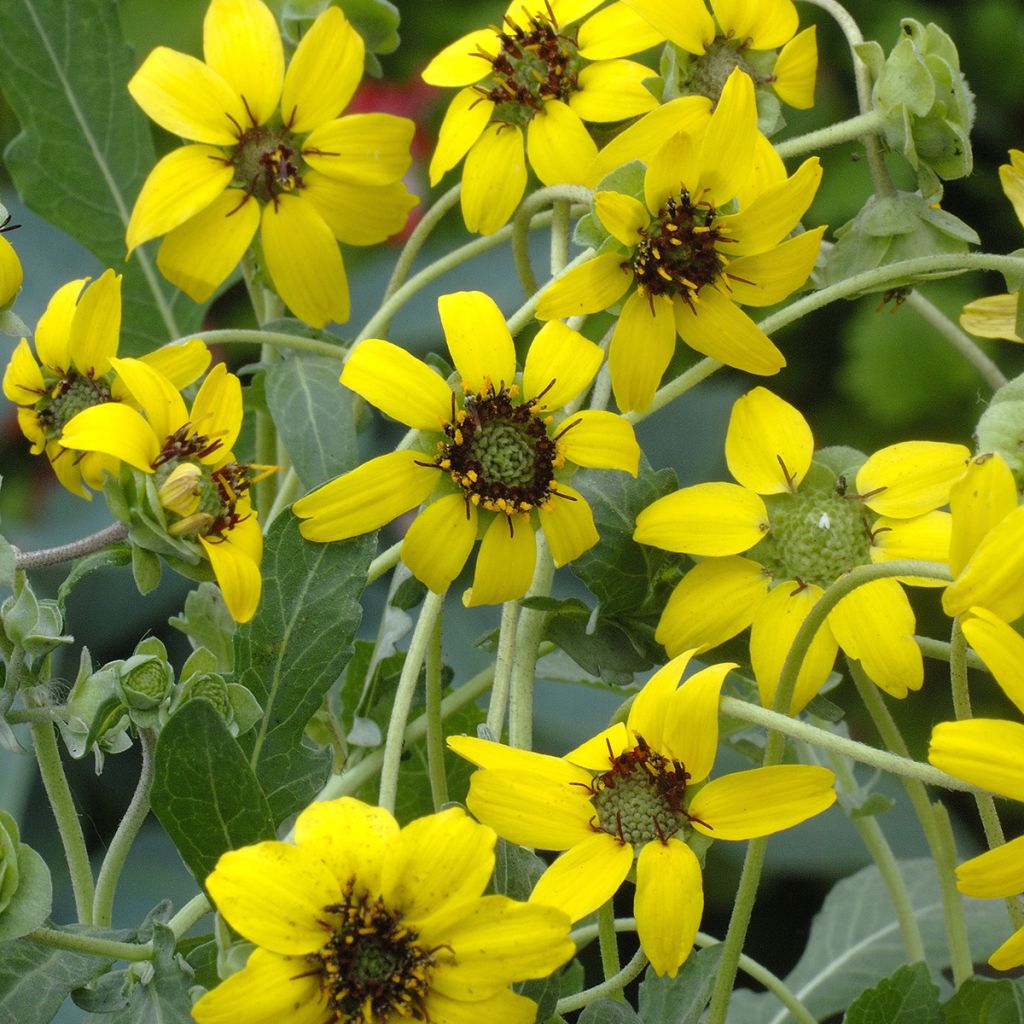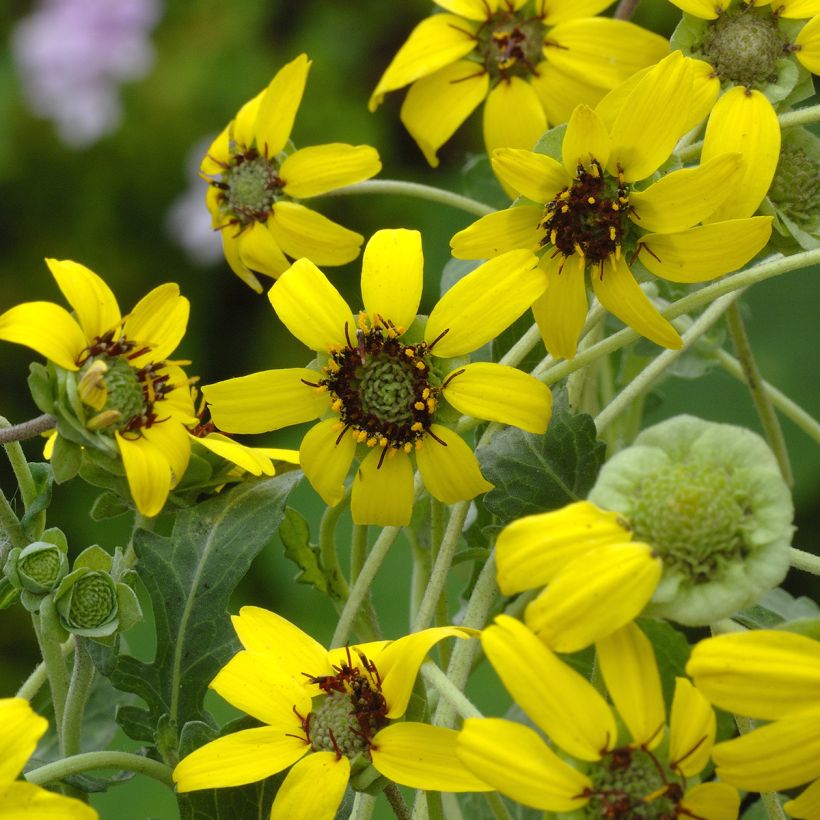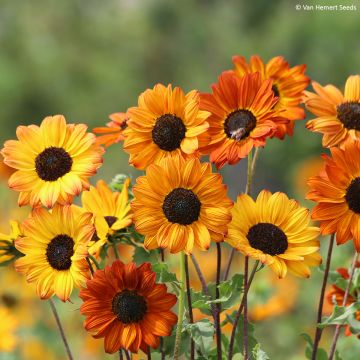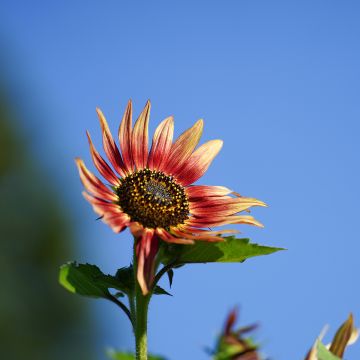Plantfit
Log in / Register
Existing customer?
New customer?
Create an account to track your orders, access our customer service and, if you wish, make the most of our upcoming offers.
My Account
Hello
Shipping country and language
Your country of residence may be:
For a better user experience on our website, you can select:
Your shipping country:
Andorra
Austria
Belgium
Bulgaria
Croatia
Czechia
Denmark
Estonia
Finland
France
Germany
Greece
Hungary
Iceland
Ireland
Italy
Latvia
Lithuania
Luxembourg
Monaco
Netherlands
Poland
Portugal
Romania
Slovakia
Slovenia
Spain
Sweden
Switzerland
Language:
French
English


Berlandiera lyrata Seeds
Berlandiera lyrata Seeds
Berlandiera lyrata
Lyreleaf Greeneyes
Order in the next for dispatch today!
Dispatch by letter from 3,90 €.
Delivery charge from 5,90 € Oversize package delivery charge from 6,90 €.
More information
This item is not available in your country.
Shipping country:
 Andorra
Andorra Austria
Austria Belgium
Belgium Bulgaria
Bulgaria Croatia
Croatia Czechia
Czechia Denmark
Denmark Estonia
Estonia Finland
Finland France
France Germany
Germany Greece
Greece Hungary
Hungary Iceland
Iceland Ireland
Ireland Italy
Italy Latvia
Latvia Lithuania
Lithuania Luxembourg
Luxembourg Monaco
Monaco Netherlands
Netherlands Poland
Poland Portugal
Portugal Romania
Romania Slovakia
Slovakia Slovenia
Slovenia Spain
Spain Sweden
Sweden Switzerland
SwitzerlandSelect delivery date,
and select date in basket
This plant carries a 6 months recovery warranty
More information
We guarantee the quality of our plants for a full growing cycle, and will replace at our expense any plant that fails to recover under normal climatic and planting conditions.
Seed-only orders are dispatched by sealed envelope. The delivery charge for seed-only orders is 3,90 €.
Would this plant suit my garden?
Set up your Plantfit profile →
Description
Berlanderia lyrata, commonly known as the 'Chocolate Daisy', is a highly floriferous North American wild plant that deserves to be discovered. Its bright yellow daisy-like flowers with mahogany centres that smell like cocoa colour the garden as much as they perfume it for long months. Spontaneous in the dry and rocky meadows of the southern United States and Mexico, this very robust perennial is made for dynamic gardens, rockeries, and country borders. Hardy, generous, undemanding, and very water-efficient, it thrives in the sun, in any well-drained garden soil, even rocky, limestone, and fairly dry in summer.
Berlanderia lyrata belongs to the Asteraceae family, just like its cousin the Ratibida. In its native lands, it is called Chocolate Daisy or Lyre leaf green eyes in English. This common name refers to the shape of the leaf, which resembles a lyre, but also to the green central disc of the flower, which is clearly visible when the yellow florets fall off. The distribution area of this botanical species covers almost the entire southern United States. In Mexico, it ventures into regions such as Chihuahua and Sonora. It is an herbaceous plant, perennial by its stump. It quickly forms a clump about 50 cm (20in) tall when flowering, with a spread of 50-60 cm (20-24in). The foliage persists more or less in winter if the plant is pruned in autumn. It consists of velvety basal leaves with pinnate and lobed lobes. They are a very soft gray-green. The flowering of Berlanderia lyrata is particularly long: it renews from June to October if faded flowers are removed and the soil remains slightly moist. In regions spared by frost, this plant can flower all year round. At the end of leafless, brownish stems, 4-5 cm (2in) flower heads composed of a collar of 5 to 9 intense yellow petals or ligules open. The central disc, composed of regularly imbricate green bracts, is surrounded by reddish-brown stamens. The flowers close or wither around mid-morning. They are visited by numerous butterflies and pollinating insects.
Berlandiera lyrata is a plant that will delight lovers of botanical curiosities and naturalistic gardens. It can be used in sunny, well-drained flower beds mixed with easy and generous annuals such as love-in-a-mist, poppies, cosmos, or perennials such as Persian cornflower or blue globes. Complete the scene by mixing in California poppies or some ornamental grasses such as Stipa tenuifolia or Briza media Limouzi... Splendid in border flower beds, the fragrant flowers of Berlanderia are also perfect in fresh or dried flower bouquets. It pairs beautifully with Salvia Blue Note!
Berlandiera lyrata Seeds in pictures


Flowering
Foliage
Plant habit
Botanical data
Berlandiera
lyrata
Asteraceae
Lyreleaf Greeneyes
North America
Planting and care
Sowing:
Sow in March-April under a warm frame at 18-20°C (64.4-68°F) and transplant in May at a distance of 25 cm (10in). Sow from May to June, directly in place, thinning to 40 cm (16in) in all directions when the plants reach 8 to 10 cm (3 to 4in) in height.
It is possible to sow in autumn for earlier flowering. Transplant in a warm nursery and place in the spring with a spacing of 25 cm (10in). In mild regions, it can also be sown directly in place in October. Thin out to leave one plant every 40 cm (16in).
Cultivation:
Berlanderia is preferably planted in spring, or at a push in early autumn, in our very dry regions in summer and not too cold in winter. It thrives in full sun, in well-drained soil: a slope, a rockery or a raised bed will be perfect. Use a mix of garden soil, compost and gravel, for example. Choose its location carefully, as this plant does not appreciate being disturbed. Once well rooted, it withstands dry summers well. However, in our driest regions, occasional watering in summer will be appreciated to support flowering. Remove faded flowers as they appear if you want to avoid spontaneous sowing. The hardiness of the chocolate daisy is good, -15°C (5°F), but clay and waterlogged soils are very detrimental to it. Overly acidic soils should be avoided, while limestone is well tolerated.
This plant is not prone to diseases or pests.
Sowing period
Intended location
This item has not been reviewed yet - be the first to leave a review about it.
Haven't found what you were looking for?
Hardiness is the lowest winter temperature a plant can endure without suffering serious damage or even dying. However, hardiness is affected by location (a sheltered area, such as a patio), protection (winter cover) and soil type (hardiness is improved by well-drained soil).

Photo Sharing Terms & Conditions
In order to encourage gardeners to interact and share their experiences, Promesse de fleurs offers various media enabling content to be uploaded onto its Site - in particular via the ‘Photo sharing’ module.
The User agrees to refrain from:
- Posting any content that is illegal, prejudicial, insulting, racist, inciteful to hatred, revisionist, contrary to public decency, that infringes on privacy or on the privacy rights of third parties, in particular the publicity rights of persons and goods, intellectual property rights, or the right to privacy.
- Submitting content on behalf of a third party;
- Impersonate the identity of a third party and/or publish any personal information about a third party;
In general, the User undertakes to refrain from any unethical behaviour.
All Content (in particular text, comments, files, images, photos, videos, creative works, etc.), which may be subject to property or intellectual property rights, image or other private rights, shall remain the property of the User, subject to the limited rights granted by the terms of the licence granted by Promesse de fleurs as stated below. Users are at liberty to publish or not to publish such Content on the Site, notably via the ‘Photo Sharing’ facility, and accept that this Content shall be made public and freely accessible, notably on the Internet.
Users further acknowledge, undertake to have ,and guarantee that they hold all necessary rights and permissions to publish such material on the Site, in particular with regard to the legislation in force pertaining to any privacy, property, intellectual property, image, or contractual rights, or rights of any other nature. By publishing such Content on the Site, Users acknowledge accepting full liability as publishers of the Content within the meaning of the law, and grant Promesse de fleurs, free of charge, an inclusive, worldwide licence for the said Content for the entire duration of its publication, including all reproduction, representation, up/downloading, displaying, performing, transmission, and storage rights.
Users also grant permission for their name to be linked to the Content and accept that this link may not always be made available.
By engaging in posting material, Users consent to their Content becoming automatically accessible on the Internet, in particular on other sites and/or blogs and/or web pages of the Promesse de fleurs site, including in particular social pages and the Promesse de fleurs catalogue.
Users may secure the removal of entrusted content free of charge by issuing a simple request via our contact form.
The flowering period indicated on our website applies to countries and regions located in USDA zone 8 (France, the United Kingdom, Ireland, the Netherlands, etc.)
It will vary according to where you live:
- In zones 9 to 10 (Italy, Spain, Greece, etc.), flowering will occur about 2 to 4 weeks earlier.
- In zones 6 to 7 (Germany, Poland, Slovenia, and lower mountainous regions), flowering will be delayed by 2 to 3 weeks.
- In zone 5 (Central Europe, Scandinavia), blooming will be delayed by 3 to 5 weeks.
In temperate climates, pruning of spring-flowering shrubs (forsythia, spireas, etc.) should be done just after flowering.
Pruning of summer-flowering shrubs (Indian Lilac, Perovskia, etc.) can be done in winter or spring.
In cold regions as well as with frost-sensitive plants, avoid pruning too early when severe frosts may still occur.
The planting period indicated on our website applies to countries and regions located in USDA zone 8 (France, United Kingdom, Ireland, Netherlands).
It will vary according to where you live:
- In Mediterranean zones (Marseille, Madrid, Milan, etc.), autumn and winter are the best planting periods.
- In continental zones (Strasbourg, Munich, Vienna, etc.), delay planting by 2 to 3 weeks in spring and bring it forward by 2 to 4 weeks in autumn.
- In mountainous regions (the Alps, Pyrenees, Carpathians, etc.), it is best to plant in late spring (May-June) or late summer (August-September).
The harvesting period indicated on our website applies to countries and regions in USDA zone 8 (France, England, Ireland, the Netherlands).
In colder areas (Scandinavia, Poland, Austria...) fruit and vegetable harvests are likely to be delayed by 3-4 weeks.
In warmer areas (Italy, Spain, Greece, etc.), harvesting will probably take place earlier, depending on weather conditions.
The sowing periods indicated on our website apply to countries and regions within USDA Zone 8 (France, UK, Ireland, Netherlands).
In colder areas (Scandinavia, Poland, Austria...), delay any outdoor sowing by 3-4 weeks, or sow under glass.
In warmer climes (Italy, Spain, Greece, etc.), bring outdoor sowing forward by a few weeks.





